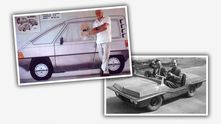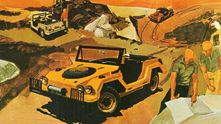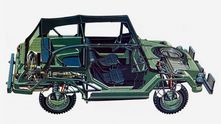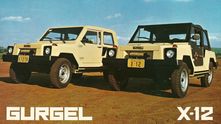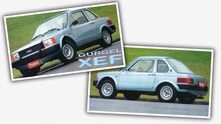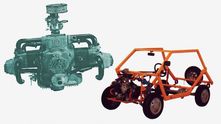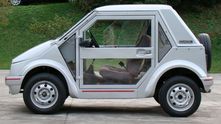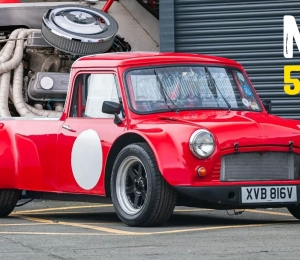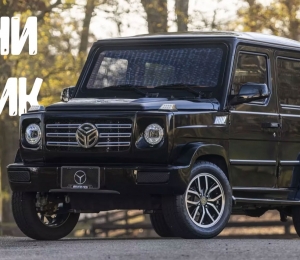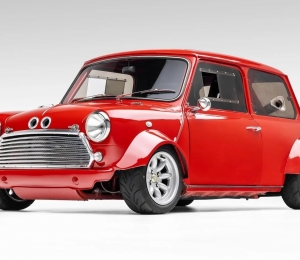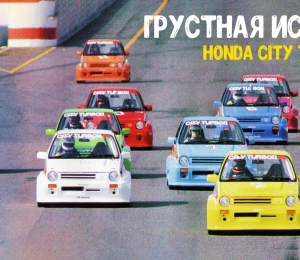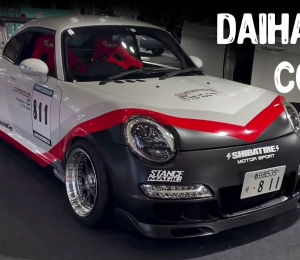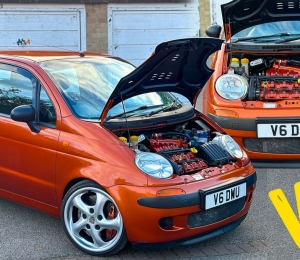There's actually a lot of competition for the title of "weirdest carmaker." You've got companies like Sbarro making cars designed for falconry, and there's genuine kooks like Mohs, making gigantic, exterior-upholstered monsters. But when it comes to weird in actual volume production, it's hard to beat Brazil's Gurgel.
Brazil had a highly protectionist automobile market at the time, with minimal imports thanks to an economic policy called import substitution industrialization. Essentially, the country decided it would be better off creating its own goods as opposed to importing them with the hope that this would create industrialization at a faster rate. You can imagine the appeal in Latin America, which had been used as a cheap source of materials for generations.
This forced the domestic manufacture of all manner of interesting cars, and divergent paths of evolution for the foreign companies that had branches there. This closed environment helped give birth to Gurgel in 1969.

Gurgel was founded by João do Amaral Gurgel, which should explain why the name sounds like choking. The first cars were fiberglass-bodied dune buggy types of cars on VW chassis, with air-cooled VW mechanicals — a template Gurgel would use extensively, making them in some ways like the biggest builder of kit cars ever.
The Ipanema, the first car, was a fairly conventional Meyers Manx-style dune buggy, and was successful enough that Gurgel got bolder with their follow-up: the Xavante, or X-10. The X-10 looked a bit like a VW Thing on some sort of male-enhancement drug. It still used VW-based mechanicals, but the body was now made from a Gurgel-designed innovation, a fiberglass/steel composite called Plasteel.
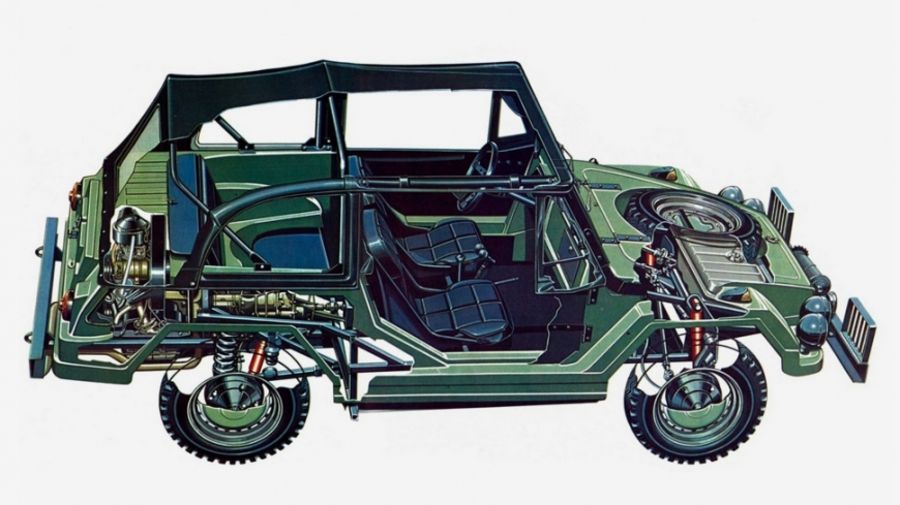
I'm not really sure why Plasteel never caught on outside of Gurgel's use — didn't they use that in Star Wars? You'd think that'd be a big enough selling point right there.
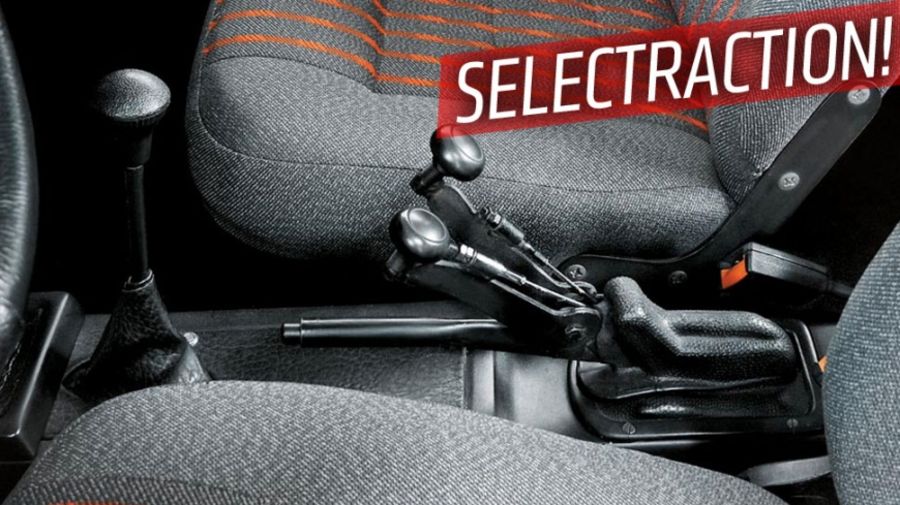
The X-10 also had some pretty novel features, like what was essentially a manually locking differential. They called it Seletraction, and really it was just two separate parking brakes, one for each rear wheel. That way, off road, if one wheel looses traction, you could manually lock it and send all the power to the wheel with grip. This is fairly easy to do on a VW platform, and Baja Bugs have been doing it for years, but Gurgel was likely the first to incorporate it into a production car.
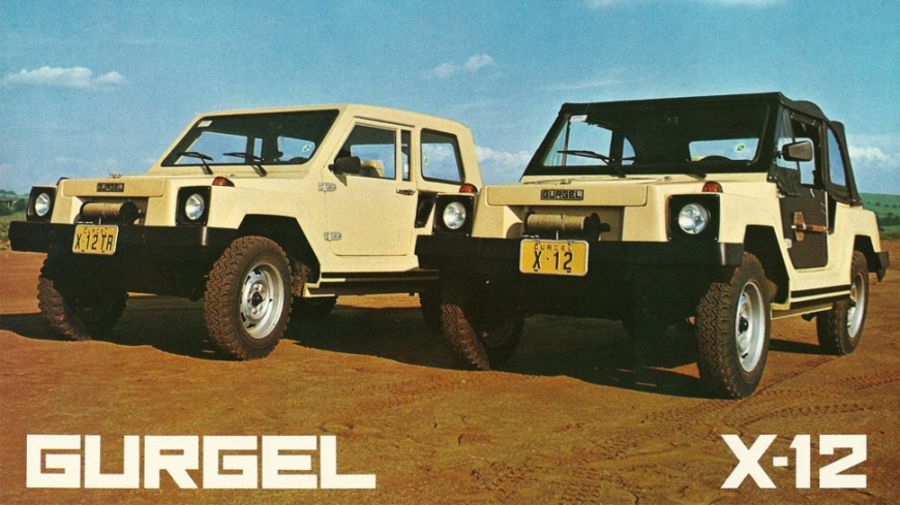
Gurgel continued with more rugged, off-road VW-based vehicles. The Brazilian-military ordered X-12 became their most popular model, and was sort of like Brazil's air-cooled, rear-engined Land Rover/Jeep. It looked very little like a VW-derived vehicle, and set the sort of strange chunky/brutally futuristic look that Gurgels cultivated.
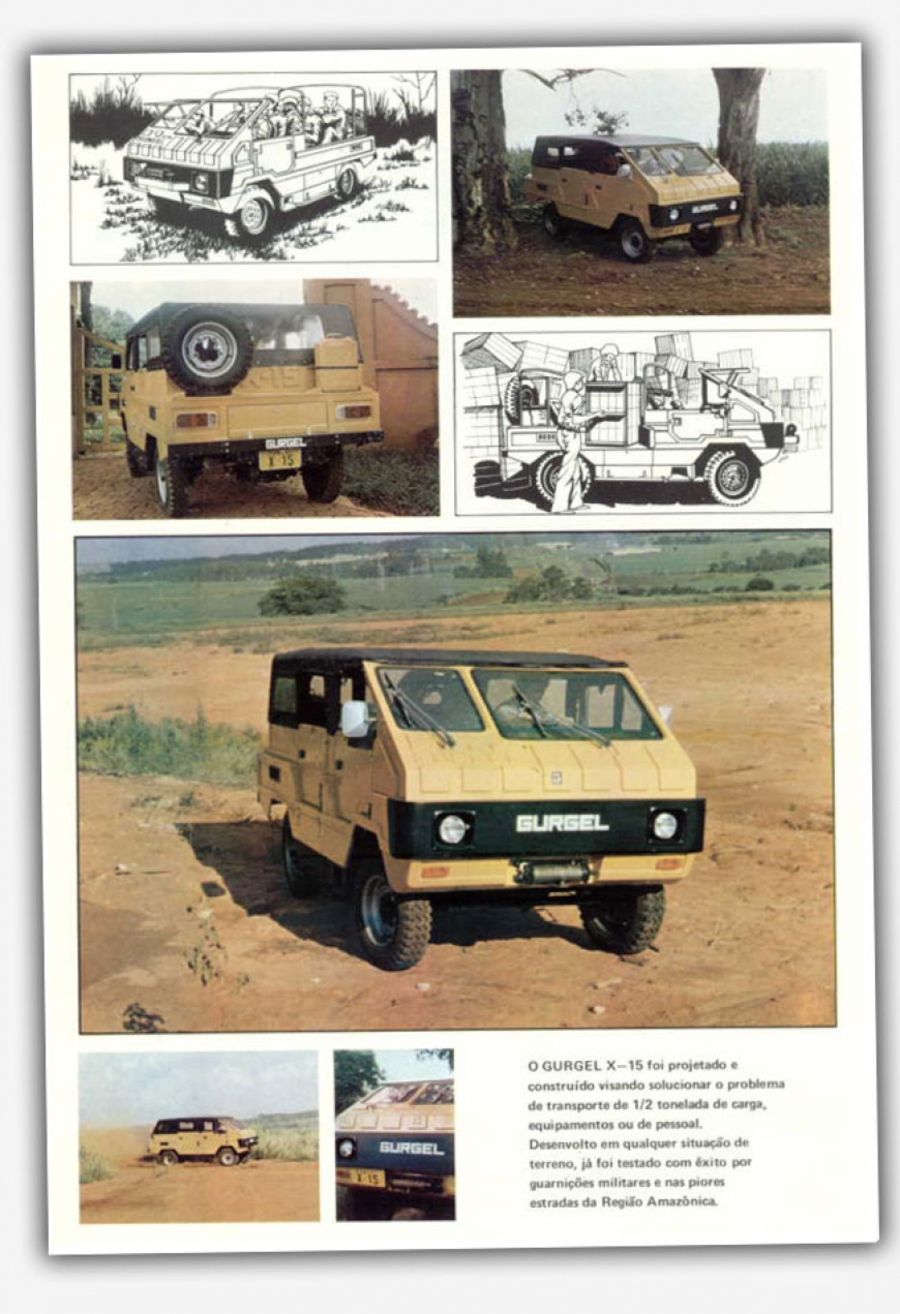
The pinnacle of the crazy, could-be-a-Mars-vehicle look was the Gurgel X-15, a roomy, angular van, still based on the air-cooled VW platform (and using VW parts-bin stuff like Microbus taillights, etc). Hell, it even had an asymmetrical-split windshield. Who does that? There was a pickup variant as well, the G-15. This one also started development as a military personell transporter, but was used in all the context you can think of light, cheap vans being used. Deliveries, camping, teens doing illegal things in them, all that.

In addition to the rugged SUVs and Enterprise-shuttle-looking vans, Gurgel was also very interested in small city cars. They made Brazil's first independently designed and built electric car, the Itaipu in 1975. It could only go about 30 MPH, and only about 20 were made, but still, it was a start. And it looked like nothing else on the road, then or now.
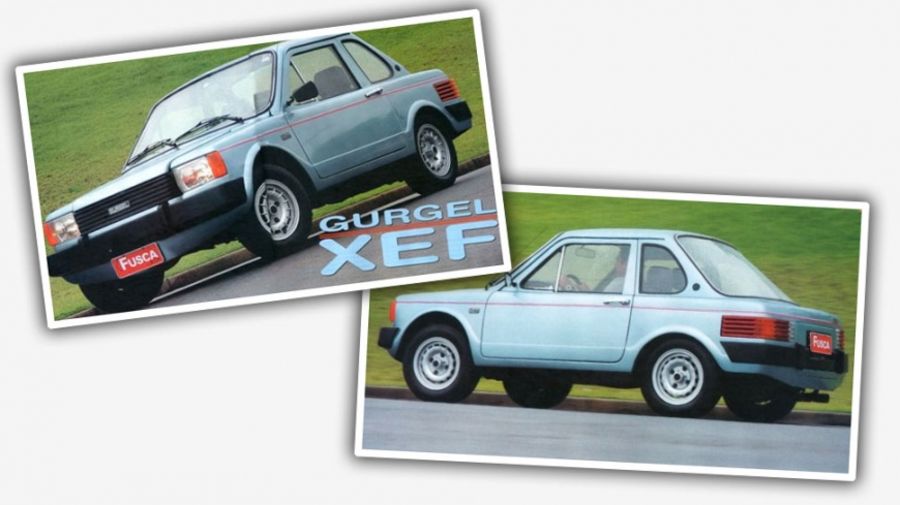
Conventional gas-powered city cars were made as well, including such oddities as the VW-powered XEF, which may be the only rear-engined, air-cooled 3-abreast seater coupé ever to be produced. It's very odd, and looks a bit like an '80s Benz.
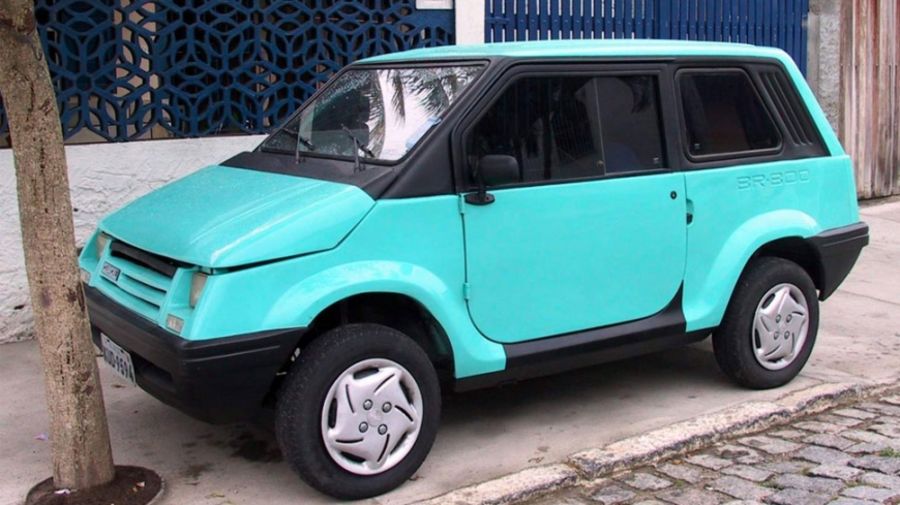
A more popular city car was the BR-800, also with Gurgel's trademark Tron-styling and made of Plasteel, but this time powered with an engine of Gurgel's own design: the Enertron.
The Enertron engine was sort of like half a VW boxer. It was a flat-twin, and even used some VW parts internally, but it was designed to be water-cooled, available in 650cc and 800cc sizes, utilizing a twin-coil, distributor-less electronic ignition system. It was an interesting, economical engine.

It was the smallest car you could get in Brazil, and seemed quite cheap at $5000— cheaper than the Chevette, it's closest competitor. Well, almost. The car was saddled with this crippling purchasing system:
It was first sold in 1988 in a system where the buyer had to acquire shares from Gurgel in order to buy the car. The car cost about $5,000, but the buyer had to buy 750 shares for another $5,000 in order to get a car - making it considerably more expensive than a $7,000 Chevrolet Chevette, the then cheapest car in the Brazilian market.[3] This system lasted until 1990, when the car was sold independently of the shares.
So that didn't help sell cars, really. Eventually, the Brazilian market started to open to foreign cars, and the quirky Gurgels couldn't really keep up with the more refined foreign competition. Well, and sometimes the unrefined competition, as the Lada Niva soon took away Brazil's top-selling SUV spot from the Gurgel Carajás, a more conventional front-engined SUV.
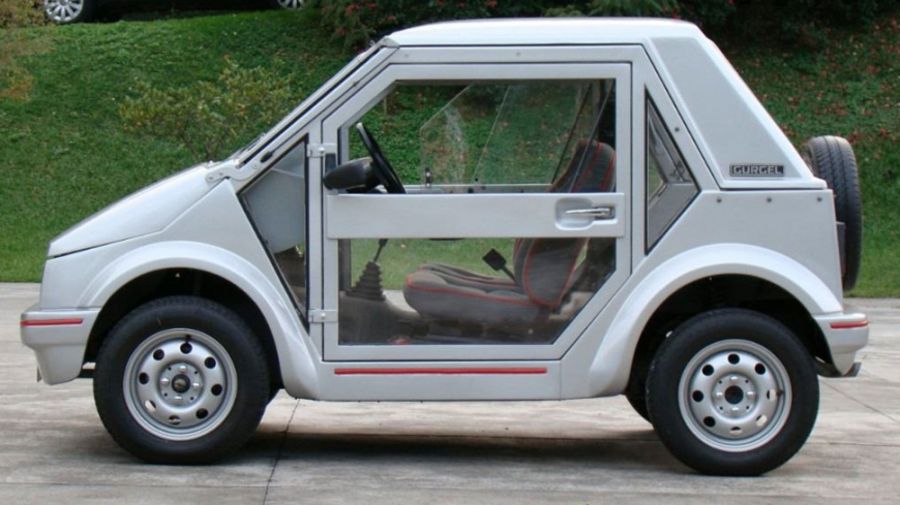
Gurgel produced one last genuinely bizarre car, the Gurgel Motomachine in 1991, which was based on the BR800, but had a very open body with telephone booth-style fully windowed doors. Not many Motomachines were sold, and by 1994 Gurgel was filing for bankruptcy. P
Gurgel was one of those car companies with a genuinely novel aesthetic and viewpoint, and I really wish we had access to some of these in the US. An old Gurgel would make a fantastic classic to own, being unique and exotic while being very easy to maintain and modify, thanks to the VW mechanicals.
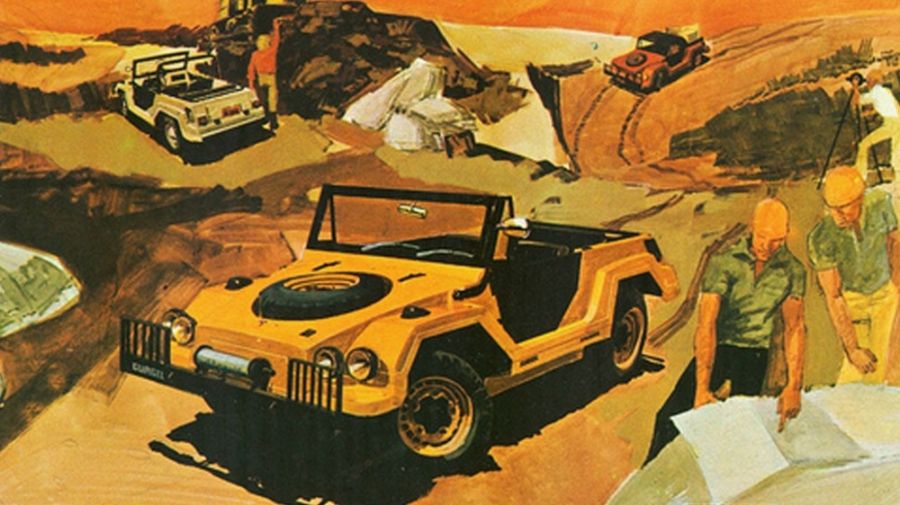
It's still my dream to run one of these at LeMons, so any Brazilians that want to help me out with that, you know where to find me.









